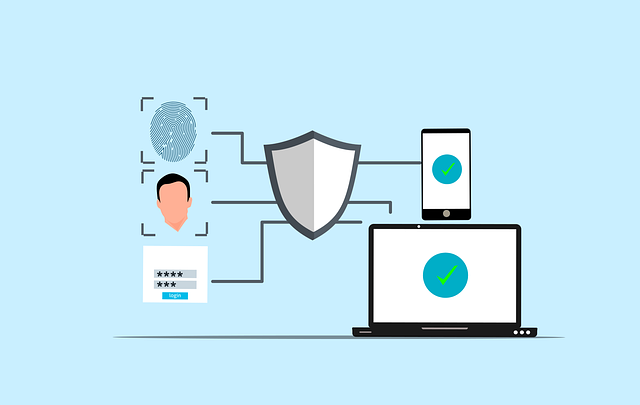In an era of dynamic security threats, robust security workforce screening is essential. This involves thorough background checks, skill assessments, and reference verification, examining criminal records, employment histories, educational backgrounds, and social networks to identify risks or exceptional qualifications. Technological advancements streamline this process, providing faster and more accurate risk assessment through data analytics and machine learning. Organizations must collaborate with adaptable providers and utilize digital systems to maintain efficient, competent security workforces capable of addressing evolving threats while safeguarding sensitive environments.
Background checks are an indispensable component of ensuring qualified security personnel. In today’s complex landscape, thorough screening processes are vital to safeguard sensitive environments. This article delves into the significance of security workforce screening, exploring comprehensive background checks and the types of information examined. We analyze the role of technology in streamlining these processes, address common challenges, and offer best practices for maintaining a competent and reliable security team. By understanding these key aspects, organizations can enhance their security measures significantly.
- The Importance of Security Workforce Screening
- Comprehending Background Checks in Depth
- Types of Information Searched During Screening
- The Role of Technology in Efficient Screening Processes
- Common Challenges and How to Overcome Them
- Best Practices for Maintaining a Qualified Security Workforce
The Importance of Security Workforce Screening

In today’s world, where security threats are ever-evolving and diverse, ensuring the qualification and reliability of security personnel is more critical than ever. Security workforce screening plays a pivotal role in safeguarding individuals and organizations from potential risks. It involves a comprehensive process of evaluating applicants’ backgrounds, skills, and suitability for security roles, which is essential to mitigate vulnerabilities and maintain a robust security system.
Effective security workforce screening encompasses multiple layers, including thorough background checks, skill assessments, and reference verification. By delving into an applicant’s history, educators, employers, and even social networks, organizations can uncover potential red flags or exceptional qualifications. This meticulous approach ensures that only qualified individuals with the necessary expertise and integrity are entrusted with sensitive security responsibilities.
Comprehending Background Checks in Depth

Background checks play a pivotal role in the security industry, serving as a robust tool for qualifying and vetting individuals seeking positions within the security workforce. This meticulous process delves into an applicant’s history, encompassing various aspects such as criminal records, employment verifications, and personal references. By scrutinizing these elements, background checks help organizations identify potential risks or red flags that may indicate unfit candidates.
Comprehensive security workforce screening involves a multi-layered approach to ensure the safety and integrity of both employees and the organizations they serve. These checks not only uncover past transgressions but also assess character traits, conduct patterns, and overall suitability for the role. In today’s world, where security threats are diverse and evolving, understanding the intricacies of background checks is essential to maintaining a robust security posture.
Types of Information Searched During Screening

During security workforce screening, a comprehensive range of information is meticulously searched and verified. This includes criminal records, with special attention to any past or current convictions related to violence, theft, or fraud. Employment history is also thoroughly reviewed, ensuring candidates have provided accurate details about their previous roles, especially those in sensitive positions.
Additionally, educational background, professional certifications, and references are checked to verify credentials. This process involves cross-referencing data from various sources, including government databases, educational institutions, and former employers, to ensure the candidate’s qualifications align with their claims. Such thorough screening is vital for upholding the integrity of the security workforce.
The Role of Technology in Efficient Screening Processes

The integration of technology has revolutionized the landscape of security workforce screening, making the process more efficient and comprehensive than ever before. Advanced digital systems now enable employers to conduct thorough background checks, verifying an applicant’s credentials, work history, and any potential red flags with unprecedented speed. This includes accessing public records, performing criminal databases searches, and utilizing social media verification tools to gain insights into an individual’s character and past behavior.
These technological advancements not only streamline the initial screening phase but also enhance the accuracy of risk assessment. By leveraging data analytics and machine learning algorithms, security companies can identify patterns and anomalies in candidate profiles, ensuring that only qualified individuals move forward in the hiring process. This ensures a robust security workforce while safeguarding against potential threats, making technology an indispensable asset in modern background check procedures.
Common Challenges and How to Overcome Them

The process of security workforce screening is paramount for ensuring qualified and trustworthy personnel, but it’s not without challenges. One common hurdle is keeping up with a rapidly growing and evolving industry that demands diverse skill sets. This requires constant updating of background check criteria to reflect current security threats and best practices. To overcome this, organizations must collaborate with robust screening providers who can adapt their services accordingly, ensuring the latest information and methods are employed.
Another challenge lies in balancing thoroughness with efficiency. Comprehensive background checks are essential for safeguarding sensitive environments but can be time-consuming. Implementing streamlined digital systems can significantly enhance the process, reducing turnaround times without compromising accuracy. By adopting innovative technologies and automating certain aspects of security workforce screening, companies can maintain high standards while managing their resources effectively.
Best Practices for Maintaining a Qualified Security Workforce

Maintaining a qualified security workforce is paramount for any organization prioritizing its safety and protection. Best practices in security workforce screening involve comprehensive background checks that extend beyond standard employment verification. These checks should include criminal history, credit reports, and education and work history verifications. Additionally, assessing psychological fitness, substance abuse history, and reference checks from previous employers are crucial steps to ensure the reliability and competence of security personnel.
Regular recertification and ongoing training programs further fortify the quality of the security workforce. Staying abreast of industry developments, new threats, and evolving security protocols ensures that guards are equipped to handle contemporary challenges. Implementing robust internal processes for performance monitoring and feedback mechanisms allows for continuous improvement, fostering a culture of excellence within the security team.
